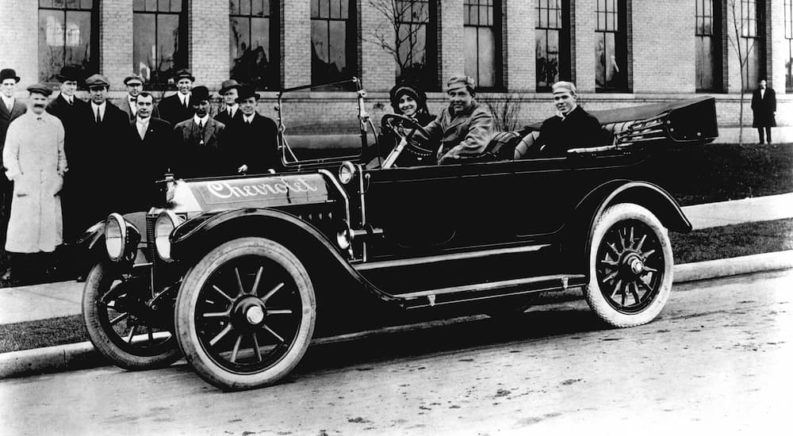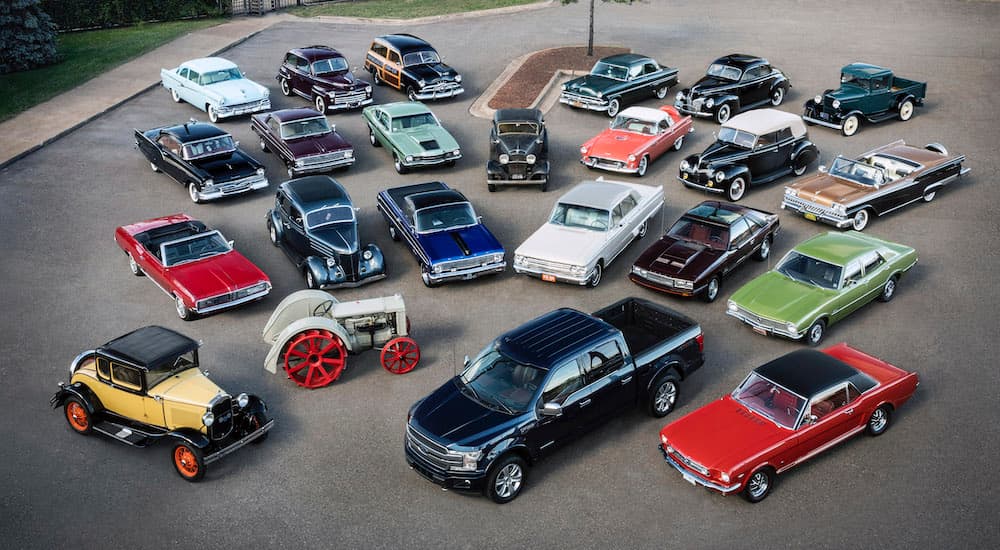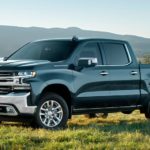What came first, the chicken or the egg? Neither, because that’s not what we’re talking about today. What we are talking about are two of the most revered truck manufacturers in the world, both of which share a history that doesn’t stray too far apart. Here is a brief history lesson on Chevy and GMC so that you’ll have a better understanding of their legacies when you begin shopping at your local GMC or Chevy dealer.
Lots of drivers may never even consider it, but the vehicles that we all drive today wouldn’t be nearly as advanced as they are if it weren’t for the early work from these manufacturers. It may seem almost trivial today to put yourself in the shoes of somebody from the past, especially over a century ago. Even after all of these years, it’s the same Chevy and GMC that have been popular namesakes for years, even before the first world war began. The odds are that you know these two brands are both branches of GM and share a lot of technology, but have you ever wondered how their relationship began? Let’s clear the air once and for all.
The Year Was 1911
Before motion pictures, before the flapper dancer era, and before the National Hockey League would even begin, it was a very different time. The year was 1911, and automobiles were still a niche industry, only having begun a couple of decades prior. Even with over 20 years of automobiles by this point, they were far from commonplace on the streets of the time. The vehicles that were on the road were slow, wobbly, and generally unstable and unsafe pieces of technology that were void of the most trivial of standard inclusions of today, from seatbelts to airbags. Times were different, and we simply didn’t have the data necessary to improve automobiles for some time. In 1911, things would ultimately shift when a newcomer stepped onto the scene, but the years leading up to this were just as important.
The Origins
Okay, here we go. Officially, Chevy was founded in March 1911, while GMC was formed in July 1911, making Chevy the older brother in the relationship. However, GMC can actually trace its roots back a few years before its official founding and has been a part of GM for longer than Chevy. Confused yet?
GMC was formed from the merger of the Rapid Motor Vehicle Company and the Reliance Motor Car Company, two small truck manufacturers that had been bought out by General Motors in 1908. William C. Durant had only founded General Motors itself in September 1908 to act as an umbrella company as he expanded his automotive empire. You may or may not have heard of Mr. Durant, but his prominence in the early days of American-made automobiles can’t be understated.
Durant had dedicated a majority of his life’s work to transportation, years before he would begin working with motorized vehicles. He was a business extraordinaire, getting his start in the automotive world when he acquired Buick in 1904. In a few short years, he transformed Buick from a failing brand to one of the most popular car manufacturers in America. While this was happening, a vehicle manufacturer that was focused on trucks was beginning to pick up steam, and behind it were the Grabowsky brothers, Mr. Max and Morris Grabowski.
The chances are that you’ve never heard of either of the Grabowsky brothers, but it was their work that rooted the foundation of what we now know as the GMC truck. The brothers formed a partnership under the banner of the Rapid Motor Vehicle Company, and they began producing trucks that sold quite well for the time, all things considered. The success that it garnered turned many heads, such as William C. Durant, who saw big things for the small yet promising truck manufacturer. It wasn’t long after this when Durant decided he’d purchase their business and incorporate them into his new brand, General Motors.
Durant’s tenure with General Motors is a tad complicated, having been forced out of his position on more than one occasion. Why did this occur, and when did this first happen? Durant, while a successful entrepreneur, didn’t seem to know when to call it quits, and a failed attempt to take over Ford left General Motors short on capital. Things needed to change within General Motors’ management, and the first order of business was to relieve Durant of his duties. The year? 1911.
A Few Months Later
Leaving the company which he had founded wasn’t easy; it wouldn’t have been for anybody. However, this didn’t stop Durant from quickly rebounding, helping form another manufacturer that would eventually be boosted into superstardom. With the knowledge and experience that he had acquired in his time with General Motors, he began looking for another business partner to help him achieve similar or even greater success than he had with General Motors. Keep in mind, at this time, vehicles were still niche, and forming a manufacturer that would stick out amongst its competitors was no small task.
He knew that if he were to create another successful company, he needed the right people, and that’s when he found Mr. Louis Chevrolet. Together with the help of Louis and his brother, Arthur, who would join a few years down the line, the Chevrolet brand had officially begun. It wasn’t a promising ending for Louis, however, as he decided to leave the company that bore his name. His brother would soon follow in his footsteps. Why would he leave, you may ask? Durant was supposedly insufferable to work with, but the real reason ultimately came down to creative differences. Louis Chevrolet wanted to focus on race cars, his specialty, while Durant understood that success lay in the mass market.
Using his skills as a seasoned businessman, Durant would soon find success within Chevrolet with no additional business partners by his side. Over the next few years, Durant would carefully play his hand in the stock market, devising a plan to slowly regain control of General Motors, using Chevrolet as his weapon of choice. By investing his profits from Chevy into General Motors stock, he became a prominent shareholder in the company once more. Finally, in May 1918, he bought out the other General Motors stockholders and secured control of the company once again, bringing Chevy with him. However, Durant’s time at General Motors would again be cut short, this time with his departure from the company in 1920.
Happy Ending? No…
The rest of Durant’s story is that of tragedy instead of continued success, and for the most part, it was around this time that he would lose relevance in the automotive space. With the Chevrolet brothers out of the picture, along with the Grabowsky brothers, Durant had essentially ruined the up-and-coming careers of four aspiring and talented vehicle technicians and inventors. The remaining days for the Chevrolet brothers weren’t glorious either, with the brothers losing everything they had worked so hard for, and Louis eventually became deathly ill. His brother, Arthur, would take his own life a few years after. Durant would essentially go on to lose everything that he had worked for up until that point too, and he would pass away only one year after Arthur Chevrolet, although they were not in contact by that point. A depressing end for some of the most influential names in the automotive industry.
For the two brands Chevy and GMC, their history may have been rather complicated, but their success would continue to grow. It’s that same success that we see today, and every GMC or Chevy vehicle sold contributes to it reaching new heights. Sure, Durant and the Chevrolet brothers would have never envisioned something as beastly as the Chevy Silverado or the GMC Yukon, but it wouldn’t have been possible without their help from the start. We owe plenty to the trailblazers of the automotive industry. So, the next time you get in your Chevy or GMC vehicle, or even when you visit a local dealership to shop for one, remember this history lesson to get a better appreciation for your vehicle.






